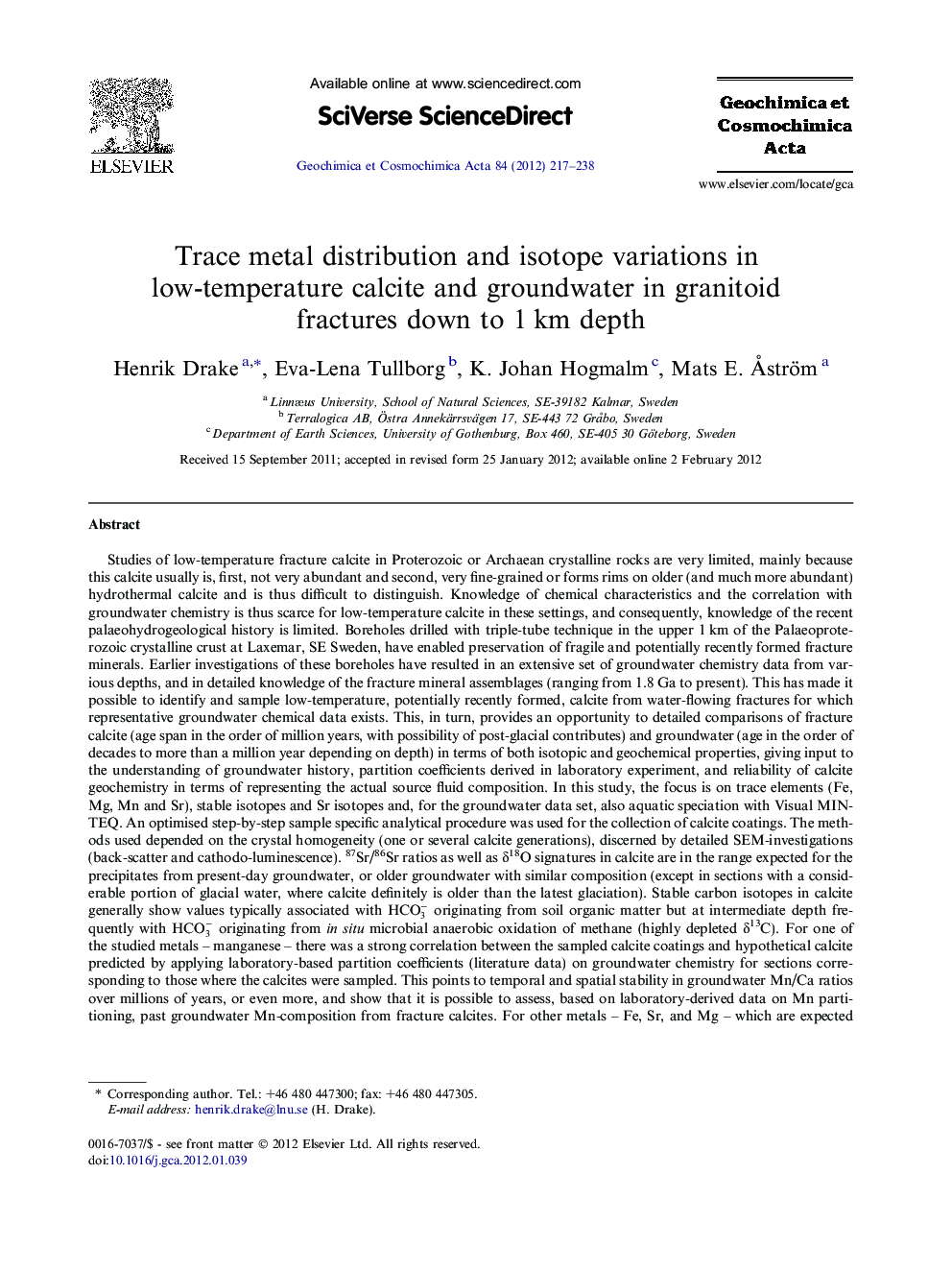| کد مقاله | کد نشریه | سال انتشار | مقاله انگلیسی | نسخه تمام متن |
|---|---|---|---|---|
| 4702945 | 1638073 | 2012 | 22 صفحه PDF | دانلود رایگان |

Studies of low-temperature fracture calcite in Proterozoic or Archaean crystalline rocks are very limited, mainly because this calcite usually is, first, not very abundant and second, very fine-grained or forms rims on older (and much more abundant) hydrothermal calcite and is thus difficult to distinguish. Knowledge of chemical characteristics and the correlation with groundwater chemistry is thus scarce for low-temperature calcite in these settings, and consequently, knowledge of the recent palaeohydrogeological history is limited. Boreholes drilled with triple-tube technique in the upper 1 km of the Palaeoproterozoic crystalline crust at Laxemar, SE Sweden, have enabled preservation of fragile and potentially recently formed fracture minerals. Earlier investigations of these boreholes have resulted in an extensive set of groundwater chemistry data from various depths, and in detailed knowledge of the fracture mineral assemblages (ranging from 1.8 Ga to present). This has made it possible to identify and sample low-temperature, potentially recently formed, calcite from water-flowing fractures for which representative groundwater chemical data exists. This, in turn, provides an opportunity to detailed comparisons of fracture calcite (age span in the order of million years, with possibility of post-glacial contributes) and groundwater (age in the order of decades to more than a million year depending on depth) in terms of both isotopic and geochemical properties, giving input to the understanding of groundwater history, partition coefficients derived in laboratory experiment, and reliability of calcite geochemistry in terms of representing the actual source fluid composition. In this study, the focus is on trace elements (Fe, Mg, Mn and Sr), stable isotopes and Sr isotopes and, for the groundwater data set, also aquatic speciation with Visual MINTEQ. An optimised step-by-step sample specific analytical procedure was used for the collection of calcite coatings. The methods used depended on the crystal homogeneity (one or several calcite generations), discerned by detailed SEM-investigations (back-scatter and cathodo-luminescence). 87Sr/86Sr ratios as well as δ18O signatures in calcite are in the range expected for the precipitates from present-day groundwater, or older groundwater with similar composition (except in sections with a considerable portion of glacial water, where calcite definitely is older than the latest glaciation). Stable carbon isotopes in calcite generally show values typically associated with HCO3- originating from soil organic matter but at intermediate depth frequently with HCO3- originating from in situ microbial anaerobic oxidation of methane (highly depleted δ13C). For one of the studied metals – manganese – there was a strong correlation between the sampled calcite coatings and hypothetical calcite predicted by applying laboratory-based partition coefficients (literature data) on groundwater chemistry for sections corresponding to those where the calcites were sampled. This points to temporal and spatial stability in groundwater Mn/Ca ratios over millions of years, or even more, and show that it is possible to assess, based on laboratory-derived data on Mn partitioning, past groundwater Mn-composition from fracture calcites. For other metals – Fe, Sr, and Mg – which are expected to interact with co-precipitating minerals to a higher degree than Mn, the correlations between measured and predicted calcite were weaker for various reasons.
Journal: Geochimica et Cosmochimica Acta - Volume 84, 1 May 2012, Pages 217–238